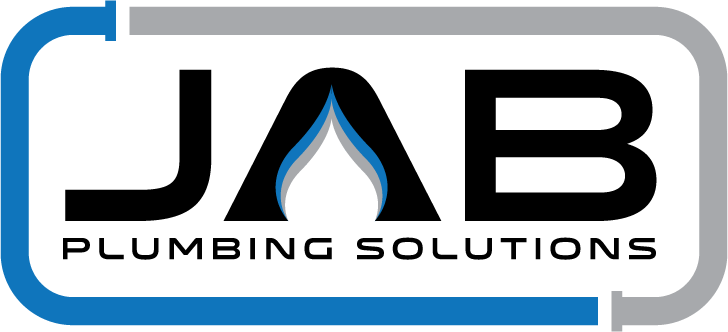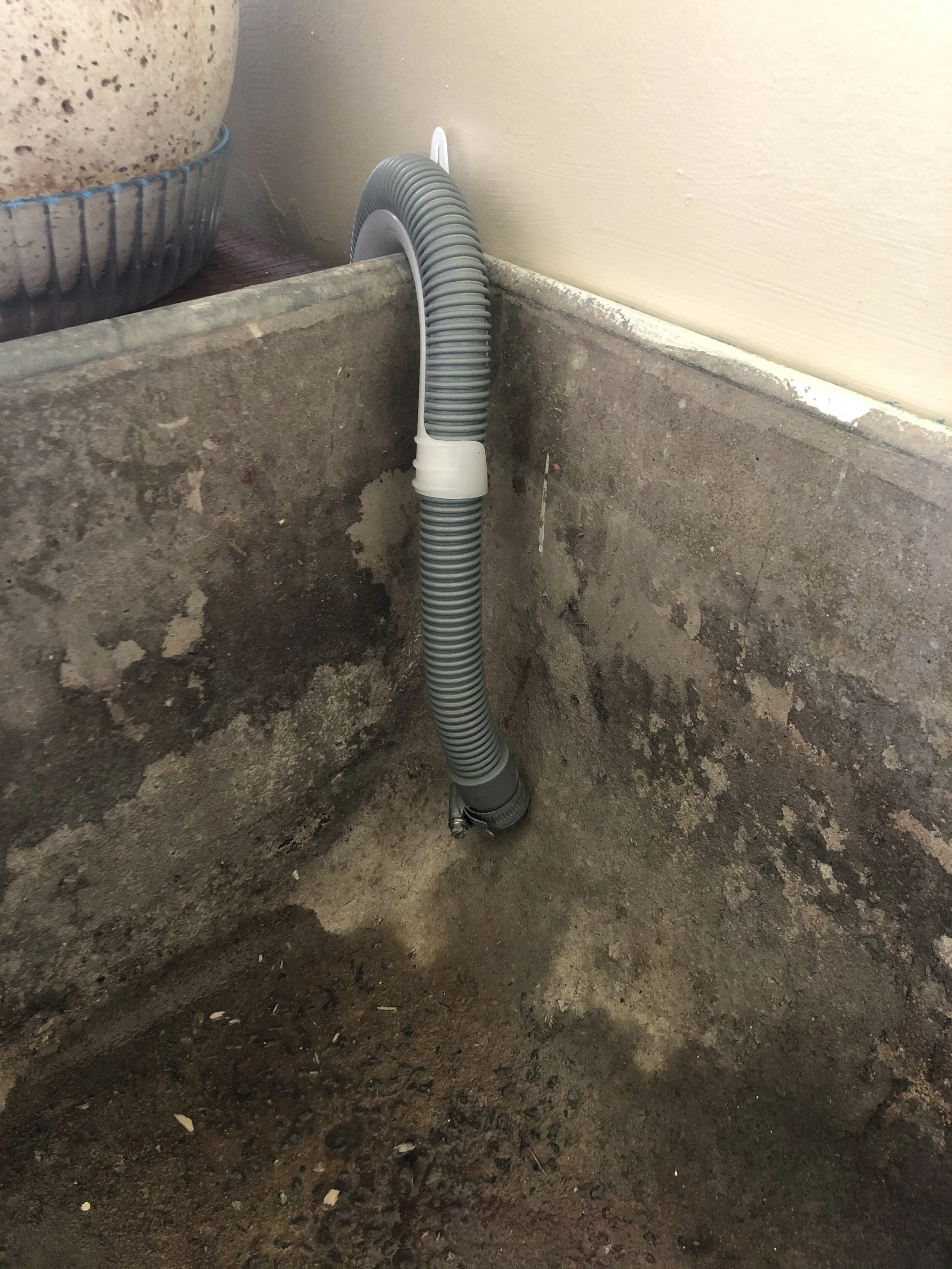When it comes to information on the internet, clogged laundry drains receive much less attention than other blocked drains in the home. The majority of articles focus on blocked drains in the kitchen, clogged toilets or blockages outside the home such as those in the main sewer line or stormwater drain. The reality is that laundry tubs and laundry sinks are just as susceptible to blockages as other drains. This articles looks at the primary causes of blocked laundry drains and the best ways to prevent them.
What causes a clogged laundry sink drain?
As with most drains, the main cause of blockages in the laundry sink is foreign debris and gunk that has ended up inside the pipes:
This laundry discharge hose feeds directly into the laundry trough or sink. This means any debris that isn’t filtered out by the washing machine lint filter can contribute towards a blockage.
You can see a buildup of hair and paint chips forming in this laundry tub drain. Installing a lint trap or a drain grate would effectively catch these things before it entered the drain pipe causing a blocked laundry sink.
Blocked sink caused by washing machine debris
In many homes, the hose that drains the washing machine is fed directly into the laundry sink. It’s not surprising, therefore, that lint and debris from the washing machine are among the most common causes of blockages in the laundry sink drain. All sorts of things end up in the washing machine, sneaking in inside the pockets of pants and shirts. Items such as tissues, tickets, chewing gum wrappers, pens, coins and money can all contribute to blocked laundry sink drains.
Blocked sinks caused by sediment in dirty water
The laundry sink is often used to dispose of dirty water, such as water that was used to mop the floor. It’s more hygienic to pour dirty water down the laundry sink than the kitchen sink, keeping it well away from areas where food is prepared. Mop water can contain all kinda of debris including hair, dust, dirt and pet fur. All of these things can build up inside plumbing pipes over time, leading to blocked sinks in the laundry.
Clogged laundry tubs caused by paint
Paint should never be poured down the laundry sink because its harmful to the environment and it’s detrimental to drains. While a small amount of water soluble paint ending up in the drains probably won’t cause any major issues (eg when washing the paint brush), oil and acrylic based paints are more problematic because it can form a coat on the inside of pipes. If you pour paint down the sink regularly, this coating will get thicker and thicker, increasing the likelihood of a clogged laundry sink.
Clogged laundry sinks caused by pet hair
Companion animals are a wonderful addition to any household, but their fur can be detrimental to the drains in your home. Pet hair can end up in the drains in a number of ways. Some people wash their dogs in the laundry sink meaning that their fur can end up going down the drain. Pet hair also ends up in the laundry sink if it’s on clothes in the washing machine - or worse - when pet bedding is washed in the washing machine. Fur can accumulate in the laundry drains over time, resulting in a clogged laundry sink.
How to prevent blocked sinks in the laundry
Clean the washing machine filter regularly: Maintaining the lint filter in your washing machine will ensure it catches as much lint and debris as possible, preventing it from ending up in the laundry drain.
Use a lint trap: Another great way of preventing clogged laundry drains caused by washing machine lint is to install a mesh lint trap on the end of the discharge hose. If you don’t want to buy one, you can make one using the end of a nylon stocking, fastening it to the hose with a cable tie. Clean or replace the lint trap once it’s full.
Install a drain grate in the laundry sink: Sink or drain grates are cheap and readily available at most hardware stores. They come is a variety of sizes to cover drain holes of different diametres. You can get stainless steel reusable strainers or disposable ones that can be replaced as needed. Grates will help to catch washing machine debris as well as other debris such as hair and dirt from mop water.
Pour dirty water in the garden: Instead of disposing of dirty mop water down the laundry sink you can pour it on the garden. Not only does this prevent grime from the floors from clogging the laundry sink, it’s also a smart way to reuse water, keeping your plants hydrated. Note: use environmentally friendly cleaning products.
Minimise the amount of pet hair that goes down the laundry sink: If you wash your dog in the laundry, brush them first to remove as much hair as possible. Removing pet hair from clothing before placing them in the washing machine is another great method for reducing clogs in the laundry basin caused from pet hair.
Vacuum the floor before mopping it: Removing as much dirt and debris from the floor before mopping it will reduce the amount of dirt that ends up in the laundry sink when you dispose of the mop water.
Dispose of paint in the bin: You can pour paint into an airtight container and place it in the bin. Another method of disposal is to pour it into something absorbent, such as toilet paper, wait for it to dry and then place it into the bin.
RELATED ARTICLES:









